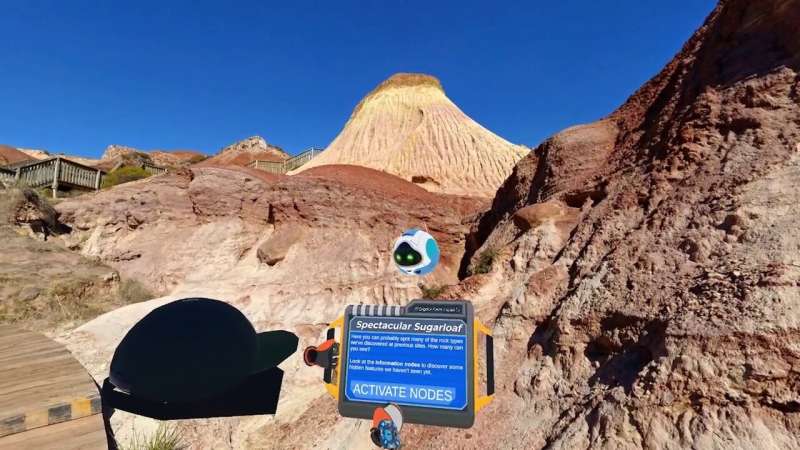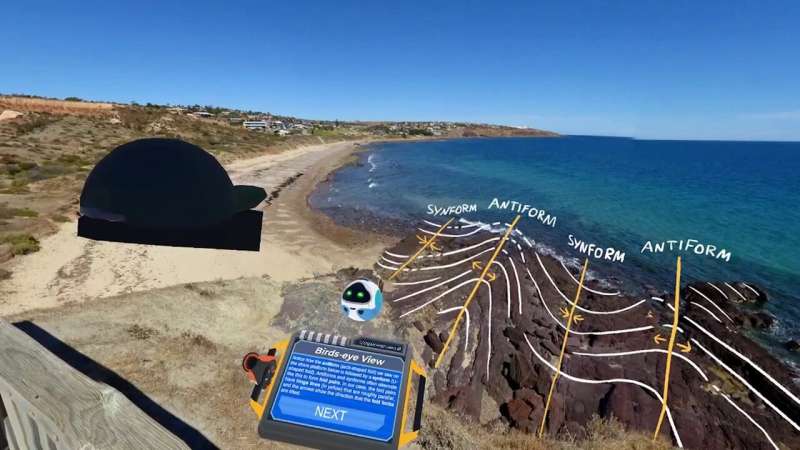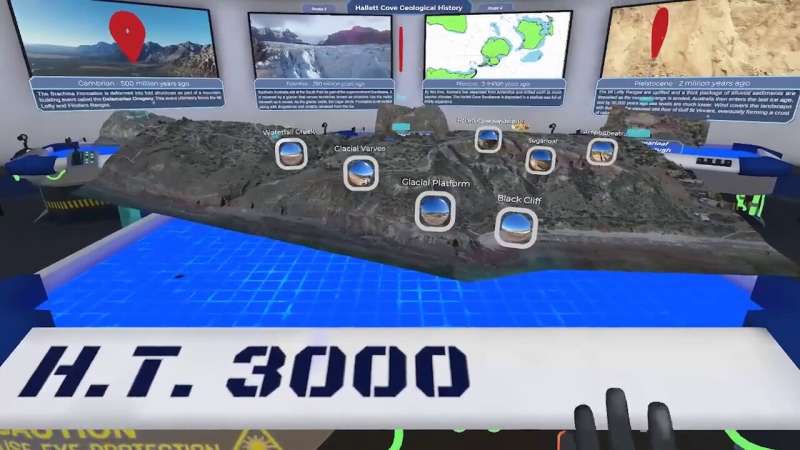Sugarloaf is a delicate and intricate sugar-like mound made up of glacial sediments that have been eroded over time. Credit: University of South Australia
It's one of the best-known geological heritage sites around the world, filled with fossils and glacial secrets. Now, thanks to virtual reality technology, the ice-age past of Hallett Cove Conservation Park is revealed in a new, gamified VR experience—Beyond the Ice—and is launched this week as part of National Science Week.
Developed by the University of South Australia's Project LIVE team in partnership with Framework VR and AusIMM, Beyond the Ice is brought to life in spectacular 3-D detail to reveal ancient and hidden stories of a fossilised landscape.
It captures 17 key geological sites using 360-degree panoramas, drone 3-D models and walk-through footage to immerse users in an interactive quest, challenging them to identify fossils with a virtual hand lens, measure glacial grooves with a compass, and draw the outlines of rock folds and layers that shape the landscape with digital ink.
Users are also accompanied by the encyclopaedic 'VT' - a virtual robot guide with a geological memory spanning 600 million years—and can take part in quizzes, collect 3-D pet rocks, and may even uncover a hidden Easter egg or two.
Freely available online, the geo-challenge can be experienced from anywhere in the world—whether by choice, distance, to accommodate mobility constraints, or even in COVID-19 lockdowns—simply by using a VR headset.
The glacial striations of Black Cliff that show its ice-age connection to the South Pole. Credit: University of South Australia
Project leader, geologist and SA Science Awards STEM Educator of the Year, UniSA's Associate Professor Tom Raimondo, says this unique virtual experience will entice and engage the imaginations of all.
"Unlike many VR experiences, this is a lot more than some pretty pictures and 3-D models thrown together that don't really offer much as a learning exercise. It was designed as an interactive, gamified experience that engages people in science by challenging them to unlock the geological secrets of Hallett Cove," Assoc Prof Raimondo says.
"Through virtual reality, users can gain an amazing bird's eye view of Hallett Cove—from the glacial striations of Black Cliff that show its ice-age connection to the South Pole, to the incredible Sugarloaf, a delicate and intricate sugar-like mound made up of glacial sediments that have been eroded over time.
"It's an incredible way to see this stunning landscape in a way you've never seen before."
New virtual reality technology brings Hallett Cove's ice-age past to life. Credit: University of South Australia
While Beyond the Ice has broad novelty and appeal, it also offers important educational aspects, particularly as an authentic supplement to fieldwork.
"Fieldwork is the most critical learning experience for any science student," Assoc Prof Raimondo says.
"Virtual reality experiences allow us to add an extra dimension to our usual field training, so that students can repeat, reflect on and extend their field skills across more locations than are logistically or financially feasible to visit first-hand. The world really is your oyster in VR.
"Not only does virtual reality provide a flexible way to engage the next generation of science students, it also lets us adapt the program to suit different audiences, different skill levels and different field locations, so it's a really fantastic step forward in online and immersive learning."
More information: Beyond the Ice is available here: www.projectlive.org.au/beyond-the-ice in VR. For those without a VR headset, it is also presented as web geo-tours using 360-degree images, interactive 3D outcrop models and deep zoom images.
Provided by University of South Australia

























